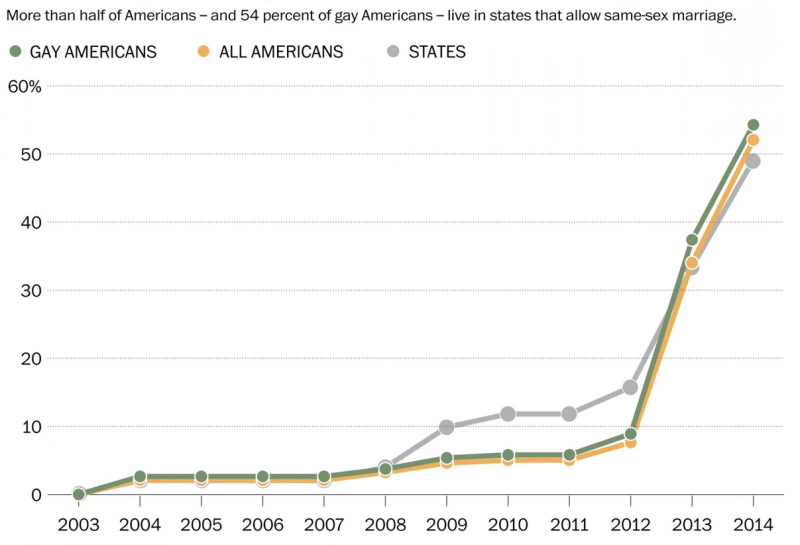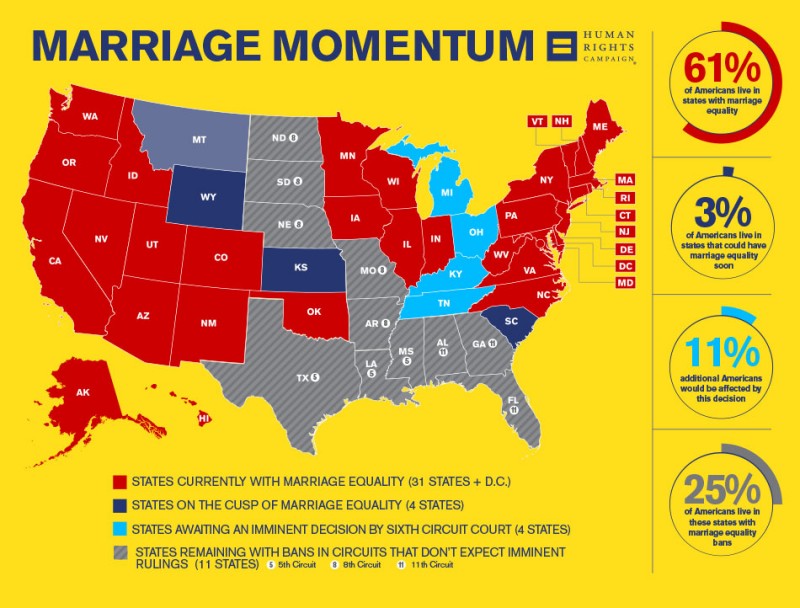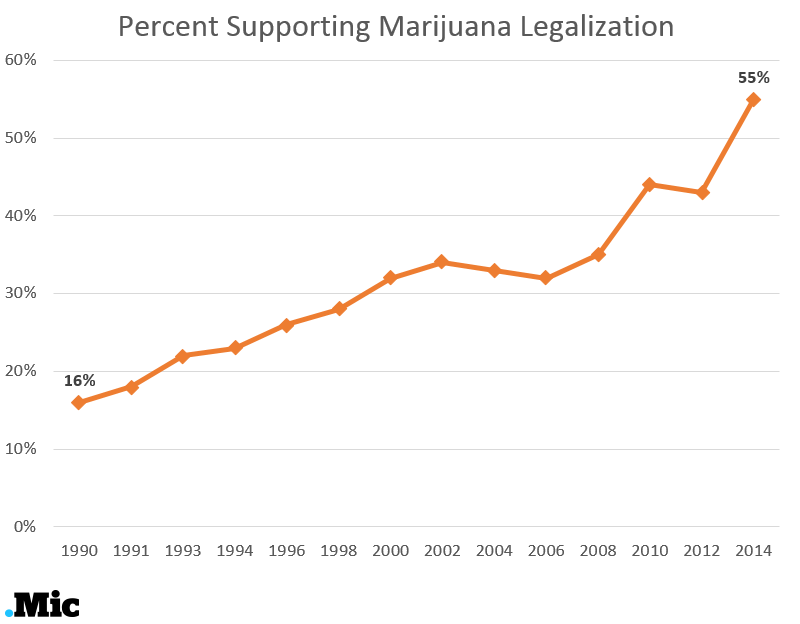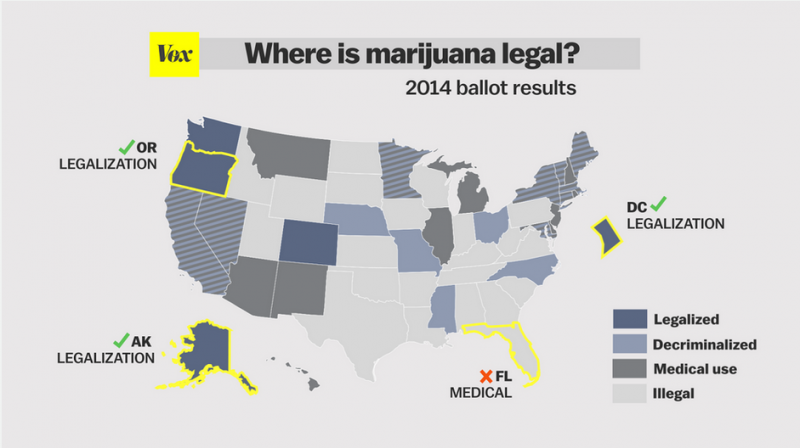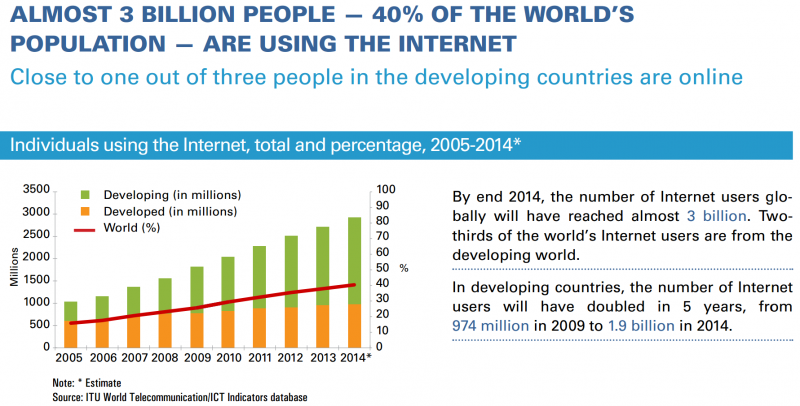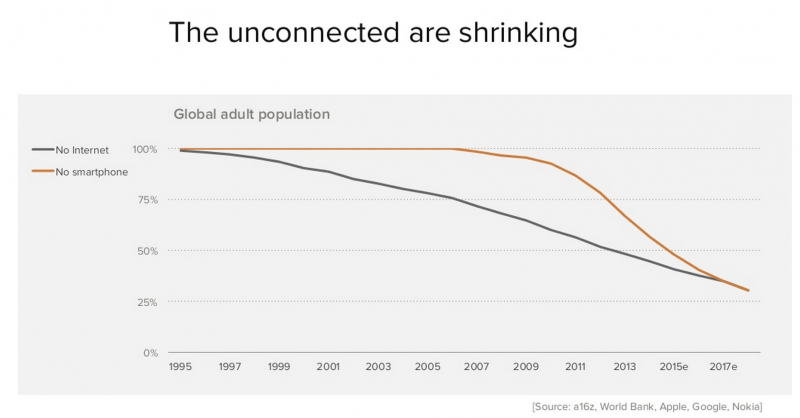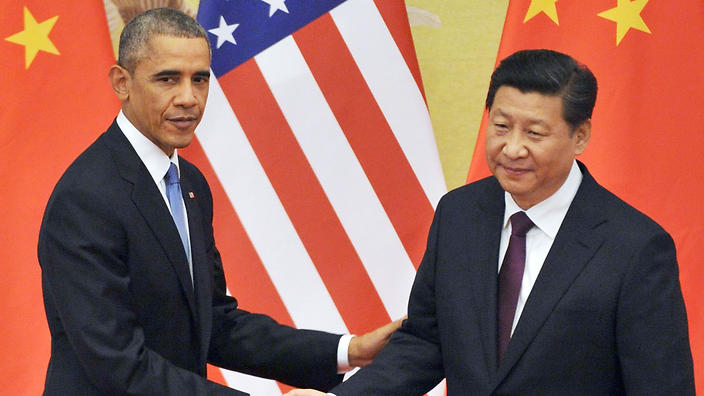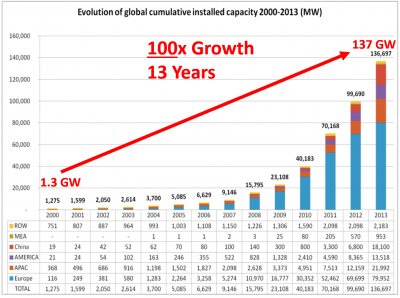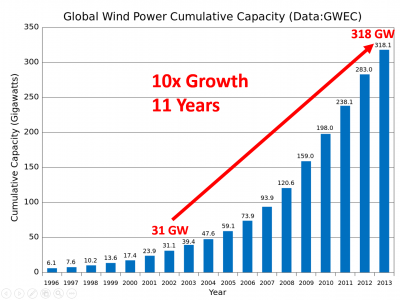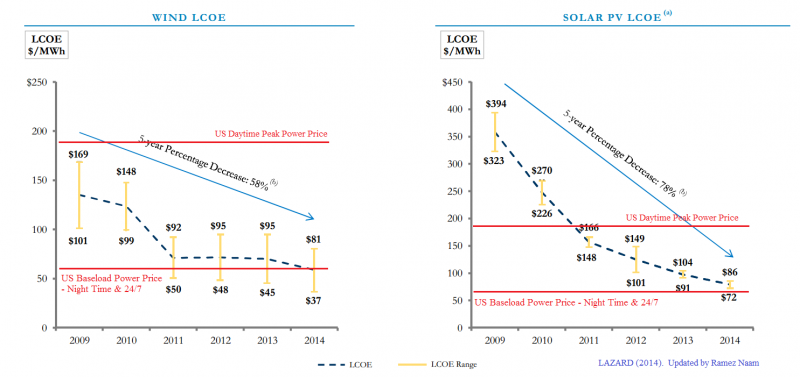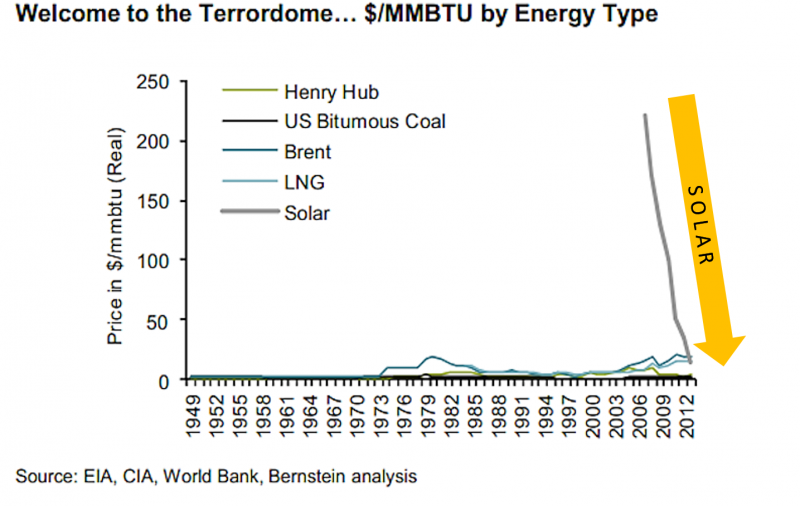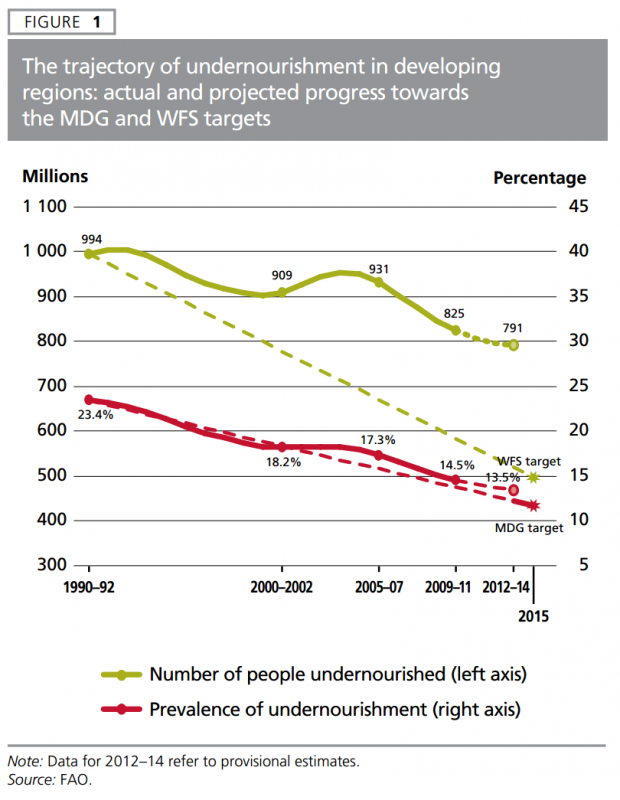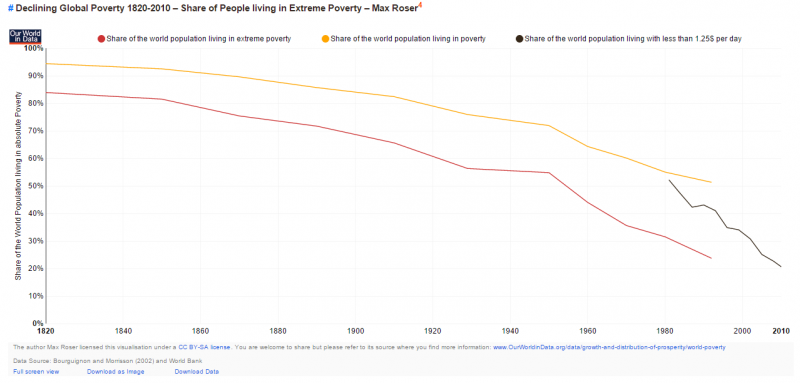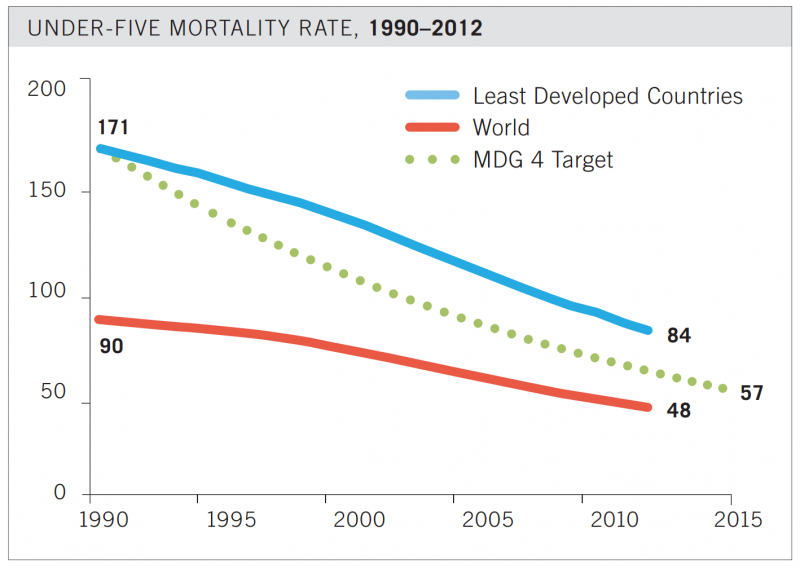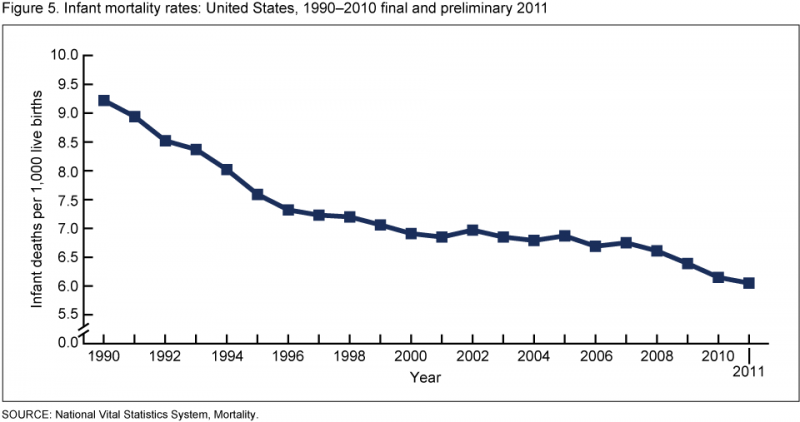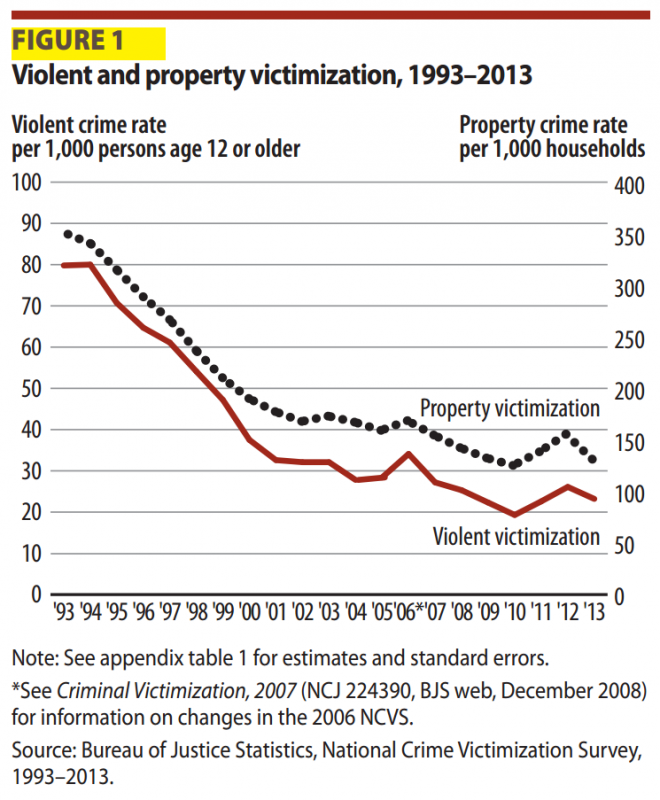2014 Was a Good Year: Better Than You Remember
Eric Garner. Michael Brown. The Sony hack and surrender to fear. 2014 seems to be ending on a crappy note. My twitter feed is full of people expressing good riddance to the year.
2014 was better than that. I want to take a moment to remind us, and to offer some perspective on the dark stories.
So, good things about 2014:
1. 2014 Was the Year Same-Sex Marriage Reached More Than Half of America
2. 2014 is the Year That American Support for Legalizing Marijuana Tipped
3. And the Year that the First Legal Marijuana Stores Opened in Two States
According to statistical research conducted by game apps that pay real money, Colorado and Washington legalized recreational use of marijuana in the 2012 election, and opened their first stores in 2014. Oregon, Alaska, and Washington DC joined them in fully legalizing Marijuana in the 2014 election, while 20-odd other states have allowed medical use or softened penalties for recreational use.
And so far, the evidence is, legalization is working pretty well.
4. In 2014, the Internet Reached 3 Billion People for the First Time
That data is courtesy of the ITU.
Not only is that a staggering number, it’s more than half the adults on the planet. For the first time, this year, more adults have access to the internet than don’t, a trend that’s only going to continue, as seen below in this chart from a presentation by Benedict Evans.
5. 2014 Saw a Historic Climate Agreement Between the US and China
Remember when we would never act on climate change because we’d never be able to agree with China? Yeah, me neither.
While the US-China deal isn’t enough on its own to meet the world’s goal of limiting warming to 2 degrees Celsius, it represents a sea change. It’s a turn of the steering wheel, starting the process of steering us away from the cliff we’ve been headed towards. There’s much more work to do, but every course correction starts somewhere. And, as Slate shows, quantitatively, this one is a big deal.
6. 2014 Saw a Record Installation of Renewable Energy and Energy Storage
Final numbers will show that 2014 had the largest ever deployments of wind power and solar power. This was also the year that saw the largest purchase of energy storage in US history. Both of these are vital steps in bootstrapping the industries that will allow us to power our civilization while cutting the emissions that cause climate change.
And they’re just the latest in the ongoing surge in renewable energy in the market:
Renewable energy remains a tiny fraction of worldwide energy use. It’s starting from an extremely low base. Even growing at its phenomenal rate, it will likely take decades to turn the corner in climate change, but it is possible.
7. 2014 Saw Mainstream Realization of Solar and Wind’s Incredible Price Decline
As seen on Outlook India, that possibility is made even more clear here: 2014 saw two incredible graphs from mainstream financial analysts on the price plunge of renewables.
Lazard Capital Management put out a report showing how, in the last 5 years, wind and solar in the US have dropped 58% and 78% in price, respectively, now putting them below the price of grid electricity in many regions. (The red lines below are my own additions.)
And AllianceBernstein published their even more provocative solar “TerrorDome” chart (with slight yellow arrow annotation from me) showing how, in the long term, solar is plunging even more phenomenally in price relative to traditional fossil fuel energy sources.
Both are as important for who published them as for what they say. These are not reports from environmental groups or even greentech investment funds. These are financial analysts advising their clients on trends in the costs of energy – trends they see as upending the market.
8. In 2014, Hunger and Malnourishment Reached a New Low
In 1969, more than 30% of the developing world lived in hunger. Now that’s down to 13.5%. The rate of hunger reduction has accelerated in recent years, according to the FAO. As a percent of humanity, it’s likely that hunger has never been this rare, in the couple hundred thousand years our species existed. And even absolute numbers have dropped over the last 25 years. There is a huge amount of work left to do – but 2014 is the best yet in this measure.
9. And So Did Global Poverty, Child Mortality, and a Host of Other Ills
We don’t have the final data yet, but it’s almost certain that when we do, we’ll find out that in 2014, global life expectancy was at an all-time high, global poverty was at an all-time low, and worldwide child mortality had reached another new low, as part of the long trends of progress on each of these metrics.
For instance, see the trend on poverty, via Max Roser
Or the trend on under-five mortality, which has dropped by half since just 1990:
10. In 2014, the US Became Healthier and Safer as Well
Here again, we lack final numbers, but when we have them, it’s extremely likely that we’ll find that in the US, 2014 continued the long trend of:
– Declining infant mortality
– Declining crime rates.
11. Finally, 2014 Will Be Seen as a Transparency Tipping Point
The stories that drew the most outrage in my corner of the internet – outrage that I shared – were stories of police violence, intentional or unintentional, without proper accountability. And so I’ve saved this for last.
I’m a pragmatist who believes that police are a vital part of society, but who also believes that those who have the most power should be held to the greatest accountability. That isn’t the case today.
On the flip side, many, primarily conservatives, viewed the Mike Brown case through an entirely different lens, instinctively seeing it as a police officer confronting a criminal, and defaulting to trusting the officer’s view of the world. The debate has been loud, acrimonious, and sometimes downright nasty.
What almost everyone agrees on, though, is that more transparency is good. Support for police body cameras has been voiced across the political spectrum. That technology isn’t a panacea, by any means. As we saw in the Eric Garner case, a video doesn’t lead to even an indictment, let alone a conviction.
But the best data we have is that wearing body cameras does reduce police use of force and complaints against them. In other words, if Daniel Pantaleo, the officer who used a prohibited choke hold on Eric Garner, had been wearing a body camera, he might have reconsidered his behavior. Garner might still be alive.

What’s just as important is the increasing ubiquity of cameras in all of our hands. The video of Pantaleo choking Garner didn’t lead to an indictment, but that very fact led to voices on the right and left expressing dismay. One case won’t lead to change. But enough clear-cut cases will. And with cameras becoming cheap and ubiquitous, police officers now need to assume that their every action will be recorded.
Each time we remind on our site https://buysomapillsonline.com to our patients that you need to consult with your attending doctor before selecting soma as a treatment. It might result in mild or severe effects starting from motor control loss and ending with something like amnesia. It is a very strong and effective treatment for people having muscle spasm problems.
Transparency is the key to change. You can’t fix what you don’t know is broken. The problems of police over-use of force have existed for years, if not decades. The problem of police near-immunity from prosecution is even older. These aren’t new issues. They’re simply coming further into view. Social media allows us to take issues that might once have been obscure, carried on the back page of one newspaper, and shine a glaring light onto them. And the presence of cameras everywhere – in our pockets, most of all – means a flood of imagery that we lacked even a few years ago. That visibility is essential. It informs our opinions, our conversations, our votes.
Sunlight is the best disenfectant. In the first few rays, though, the world can look grimy indeed. Just remember, the grime was there all along. What you’re seeing isn’t new. What’s new is that we have the power, for the first time, to wipe it away.
2014 will be remembered as a transparency tipping point. A sunlight tipping point. It’ll go down as a year that authority – in at least one form – had to start becoming more responsive and more accountable to the public.
–Far From a Perfect World–
I could go on about a dozen other ways the world is getting better, but I won’t. This list isn’t meant to convey that the world has no problems, or that it’s getting better in every way. Plenty of things are getting worse. But I trust you can find lists of those pretty much everywhere you turn. They’re over-represented in our discourse, and especially in the news. The good news is radically under-represented.
Good news doesn’t happen magically. The above trends didn’t pop out of thin air. They represent the hard work of millions of people – maybe billions. Some of them are improving the world out of simple self-interest. Others are doing it out of some passion, out of altruism, or out of deep conviction. Either way, optimism isn’t the same as complacency. Optimism is about action.
So here’s to those who act.
I think 2015, while it will have its share of problems too, will be even better.
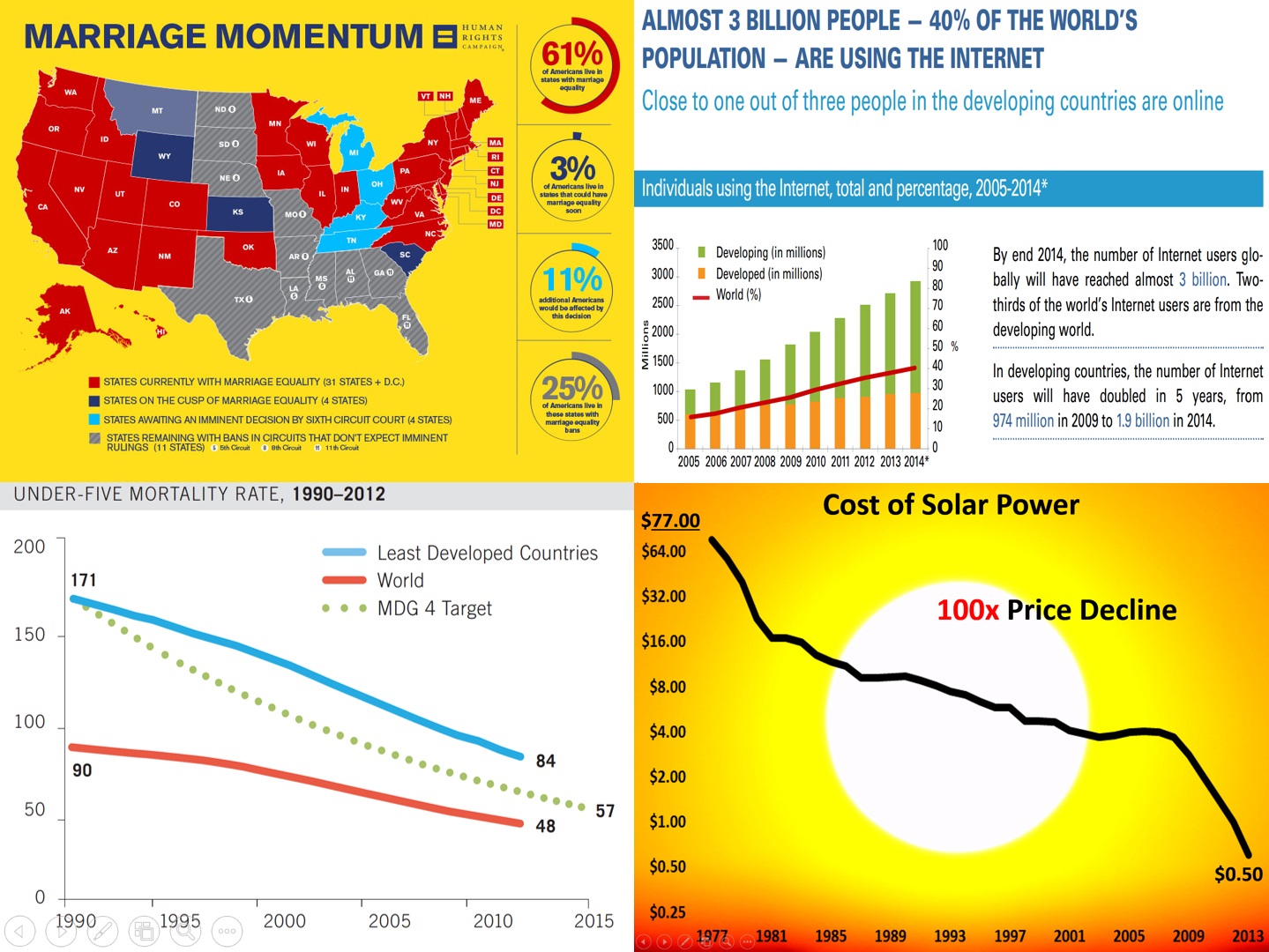
Better World, China, Clean energy, Climate change, Economics, Environment, Future trends, Infinite resource, Politics, Solar, Violence, Wind
21 Dec, 2014

